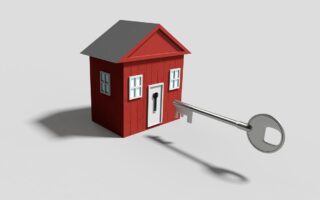Asbestos in Your French House

Asbestos is considered to be a lethal product in France and the use and manufacture of asbestos-based materials has been forbidden since 1997.
Nevertheless, asbestos remains widespread in buildings because its uses are manifold. Not only is it fire-proof, it offers resistance to high temperatures, acids and micro-organisms, electrical resistance, mechanical tensile strength, resistance to wear and abrasion and good acoustic correction.
It can be found not only in the tiles of false ceilings, but also in less well-recognised forms such as asbestos cement pipework, draught-proofing foam, floor tiles, flocking, lagging and certain types of card.
If you are selling a detached house whose planning permission was granted before 1 July 1997, you are legally required to have an asbestos report carried out. If the last asbestos report is dated before January 1, 2013, a new one must be carried out in accordance with the new regulations in place [Art. R 1334-16 et R 1334-29-4 du Code de la Santé Publique / Décret 2011-629 du 3 juin 2011 / Arrêtés du 12 décembre 2012] Otherwise, you are liable for any asbestos that the buyer may discover on the property after the sale and may be forced to bear the cost of removing it at any time over a 30-year period!
The removal must be done by an insured technical inspector who is recognised as competent by an organisation such as COFRAC (COmité FRancais d’ACcréditation). The report is valid for 12 months.
If asbestos is found to be present in your house, the technician will draw up an assessment table for its state of preservation.
* If you receive mark 1, a visit will be carried out every three years.
* If the mark is 2, the dust level must be checked by an accredited organisation.
* If the mark is 3, compulsory work must be undertaken.
When work is carried out, the area is sealed off and the workers wear protective, disposable suits and masks. They also often use hand tools to produce less dust. All the asbestos is taken away and disposed of safely.
When Is It Dangerous?
It is the tiny needle-like fibres in asbestos that, when breathed in, constitute a danger to health. This occurs particularly when materials containing asbestos suffer abnormal wear, or during operations that affect the integrity of the material: this might include drilling, sanding, cutting and friction.
These situations can lead to significant exposure if careful precautions are not taken and the Government recommends that private individuals avoid any direct operations on friable materials that they suspect may contain asbestos and seek professional help.
To find a contractor who can deal with asbestos, look under ‘amiante’ in your local directory or on www.pagesjaunes.fr.
About Asbestos
Asbestos, which means ‘incorruptible’ in Greek, is a natural material and has been used since 2,500 BC in pottery, tablecloths, winding sheets for Egyptian mummies and numerous other applications. Chrysotile, crocidolite and amosite are three of the minerals from which asbestos is extracted, and there are asbestos quarries worldwide, including in France, Corsica and the Cévennes region. These are now abandoned, but still pose environmental problems.
Asbestos is a recognised pathogen, causing two type of cancer (broncho-pulmonary cancer and pleural and peritoneal mesothelioma), along with two pulmonary complaints (asbestosis and fibrosis. The latency period for these diseases is from 20 to 25 years and can be as much as 40 years. France is projected to have around 10,000 asbestos victims by 2020 and the worst predictions forecast 100,000 victims by 2025.
•With thanks to Martial Bonifassy
Share to: Facebook Twitter LinkedIn Email
More in corsica, health, insurance, legal, Removals, work
By FrenchEntrée
Leave a reply
Your email address will not be published. Required fields are marked *



